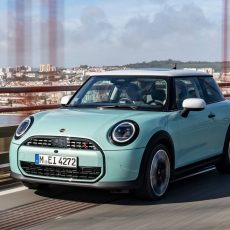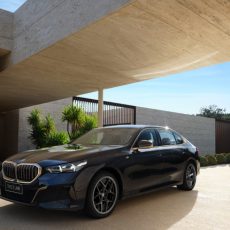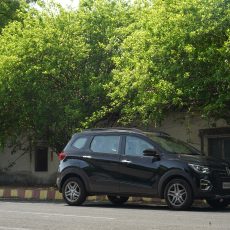The Ferrari SF90 Stradale is the most powerful prancing horse road car and shares its name with the SF90 Formula 1 car, while ‘Stradale’ means ‘road’.
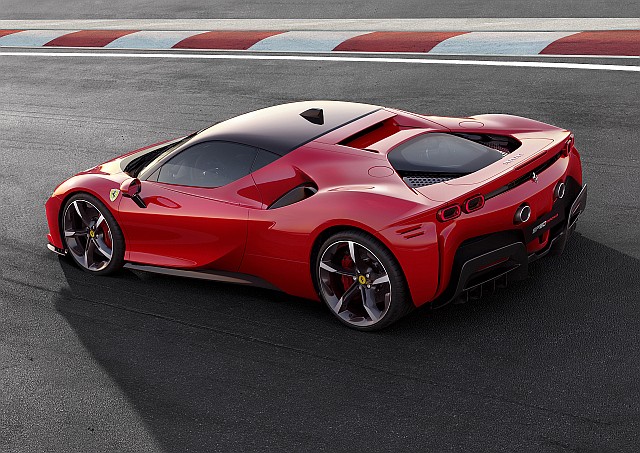
The Ferrari SF90 Stradale was launched to mark the 90th anniversary of Scuderia Ferrari which has been the link between Ferrari’s road and track cars. The starting point was the F154 family engine which was worked upon and had its capacity increased from 3,902 cc to 3,990 cc, and with its output makes it the most powerful production Ferrari V8 engine.
POWERTRAIN
The 4.0-litre twin-turbocharged 90° V8 engine produces 780 PS at 7,500 rpm and 800 Nm at 6,000 rpm. It is mated to an eight-speed, dual-clutch, automatic transmission. It also has a powerful Lithium-ion battery that powers three electric motors capable of producing up to 162 kW (220 PS) taking the total powertrain output to 1,000 PS. This also makes it the first series-production plug-in hybrid electric vehicle (PHEV) and is also the first Ferrari sports car to be equipped with all-wheel drive. The engine has had its intake and exhaust system completely redesigned. It features a narrower cylinder head with a central injector and the adoption of 350-bar direct injection; another first for a Ferrari V8.
The Ferrari SF90 Stradale has become the new benchmark for standing starts capable of achieving 0-100 km/h in 2.5 seconds and 0-200 km/h in 6.7 seconds.
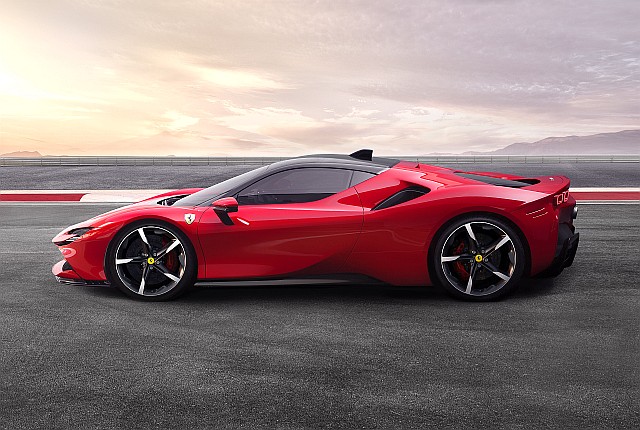
The different modes offered are E-Drive, Hybrid, Performance and Qualify. E- Drive uses the motors powered by the battery to run and has a range of up to 25 kilometres on a full charge. Hybrid is the default mode when the car is started. The control logic decides whether to keep the petrol engine running or not, giving the driver full power from the V8 when needed. Performance mode will keep the engine running as the priority is charging the battery, to guarantee that full power is available when required. Qualify mode has the engine and e-motors run in synergy for the full 1,000 PS.
VEHICLE DYNAMICS
The new hybrid architecture features different control logics. The three main areas of focus were the high-voltage system controls (battery, RAC-e, MGU-K, inverter), engine and gearbox control and vehicle dynamics controls (traction, braking, torque vectoring). Ferrari also developed the eSSC (electronic Side Slip Control) vehicle control system which introduces three innovative dynamic regulation and distribution strategies for engine torque to all four wheels: Electric Traction Control (eTC) manages the availability of the torque distributing it to the individual wheels to suit driving conditions. Brake-by-wire control with ABS/EBD allows the braking torque to be split between the hydraulic system and the electric motors, which allows regenerative recovery under braking. Torque Vectoring is available on the front axle to manage electric traction on the outside and inside wheel in cornering to maximise traction and help ensure high-performance driving.
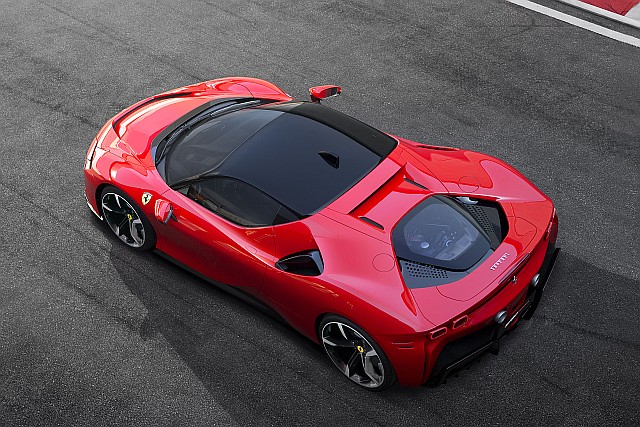
CHASSIS
A lot of research went into incorporating the hybrid system into the car which was an extra 270 kg. Ferrari still managed to keep the weight of the car down to 1,570 kg, which resulted in a record-breaking power-to-weight ratio of 637 PS/tonne. The chassis has been redesigned for the new power unit and the introduction of AWD. Other new solutions include an all-carbon-fibre bulkhead between the cabin and the engine and two new aluminium alloys that allow the chassis to have a 20 per cent higher bending stiffness and 40 per cent higher torsional rigidity than previous platforms, without any increase in weight. A new alloy known as ‘quiet aluminium’ is used for the floor pan, that improves NVH (noise, vibration, harshness) characteristics.
DESIGN AND AERODYNAMICS
Aerodynamics proved to be a great challenge in the making of the Ferrari SF90 Stradale. They wanted to achieve a downforce and aerodynamic efficiency at a level that was never achieved before. After working on the aerodynamics, the results, in terms of performance, were very impressive. The car has the ability to generate 390 kg of downforce at 250 km/h, making it the new benchmark for downforce and efficiency in high-performance road cars.

Ferrari Design have completely revisited the proportions. The aim was to design a car capable of delivering unprecedented performance for a Prancing Horse production car. A low centre of gravity also allowed the designers to lower the cabin by 20 mm. Combined with a more curved windshield, slender A-pillars and a wide track, it creates a beautiful proportion with sleeker volumes. The headlights move away from the L-shaped look, to a slender slit design integrated with the brake air-intakes, giving the car a futuristic appeal. The tail-lights have also evolved from Ferrari’s iconic round shape to horizontal luminous rings.
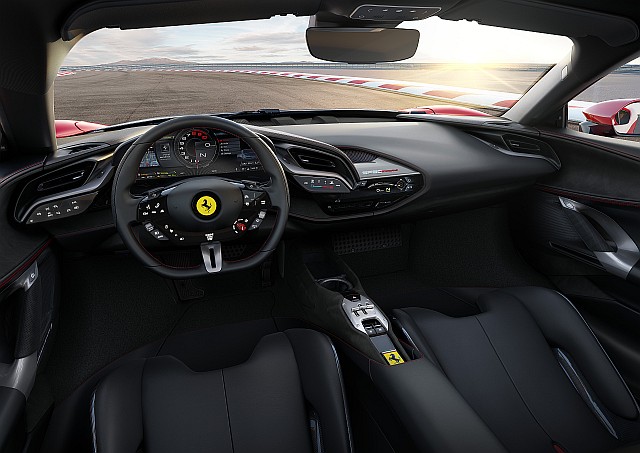
The interior includes a central instrument cluster that comprises a single 16-inch digital HD screen that is angled towards the driver and gives the car an F1-style wraparound cockpit effect. Controls mounted on the steering-wheel are for the headlights, windscreen wipers, indicators and also feature the drive modes on the left with the Manettino switch on the right. Four buttons on the central area allow the driver to select the power-unit modes. The Head-Up Display is another feature that allows various data to be projected onto the windshield within the driver’s field of vision.
The Ferrari SF90 Stradale also offers the extended seven-year maintenance, in which Ferrari covers all regular maintenance for the first seven years of the car’s life.
Story: Azaman Chothia


